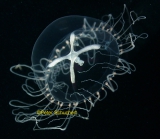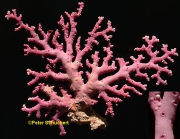WoRMS taxon details
Hydrozoa
- Subclass Hydroidolina
- Subclass Trachylinae
- Subclass Automedusae accepted as Trachylinae (synonym)
- Order Hydroida accepted as Hydroidolina (synonym)
- Infraclass Hydroidomedusae accepted as Hydroidolina (not a monophyletic group)
- Subclass Leptolida accepted as Hydroidolina (not a monophyletic group)
- Subclass Leptolinae accepted as Hydroidolina
- Order Milleporina accepted as Hydroidolina (unaccepted > unavailable name, homonym of Milleporina Ehrenberg, 1831)
- Subclass Stylasterina accepted as Hydroidolina (unaccepted > unavailable name)
- Order Trachylina accepted as Trachylinae (spelling variant)
marine, brackish, fresh, terrestrial
recent + fossil
Owen, R., 1843. Lectures on the comparative anatomy and physiology of the invertebrate animals., available online at https://archive.org/stream/lecturesoncompar00owe#page/82/mode/2up [details]
WoRMS (2025). Hydrozoa. Accessed at: https://marinespecies.org/aphia.php?p=taxdetails&id=1337 on 2025-07-16
Date
action
by
2004-12-21 15:54:05Z
created
db_admin
![]() The webpage text is licensed under a Creative Commons
Attribution 4.0 License
The webpage text is licensed under a Creative Commons
Attribution 4.0 License
Nomenclature
original description
Owen, R., 1843. Lectures on the comparative anatomy and physiology of the invertebrate animals., available online at https://archive.org/stream/lecturesoncompar00owe#page/82/mode/2up [details]
Taxonomy
status source
Collins, A. G. (2009). Recent insights into cnidarian phylogeny. <em>Smithsonian Contributions to the Marine Sciences.</em> 38: 139-149. [details]
Other
additional source
Cartwright, P., & Collins, A. G. 2007. Class Hydrozoa. in: Daly, M., Brugler, M. R., Cartwright, P., Collins, A. G., Dawson, M. N., France, S. C., McFadden, C. S., Opresko, D. M., Rodriguez, E., Romano, S., & Stake, J. 2007. The phylum Cnidaria: A review of phylogenetic patterns and diversity 300 years after Linnaeus. Zootaxa 1668: 127-182., available online at http://www.mapress.com/zootaxa/2007f/z01668p182f.pdf
page(s): 153 [details] Available for editors [request]
[request]
page(s): 153 [details] Available for editors
 Present
Present  Inaccurate
Inaccurate  Introduced: alien
Introduced: alien  Containing type locality
Containing type locality
From editor or global species database
Diagnosis Cnidaria with mostly epidermal gonads. Original life cycle includes a polyp and a medusa stage. The medusa stage develops the gonads. Polyps always without internal septae and pharynx, mostly radially symmetric. Medusae produced by budding from polyp stage, if such a stage is present. Medusa nearly always with a velum, without rhopalia. The original life cycle has been modified extensively: the medusa stage is often reduced to a mere appendage of the polyp stage, rarely completely reduced. In some orders the polyp stage is strongly or completely reduced. Polyp stages form often colonies of macroscopic size. Integrated colonies including polypoid and medusoid structures can also form complex colonies, giving them it the appearance of an individual organism. [details]
| Language | Name | |
|---|---|---|
| Dutch | hydroïdpoliepenhydroïden | [details] |
| English | hydrozoanshydromedusaehydroids | [details] |
| French | hydroméduseshydraïres | [details] |
| German | HydropolypenHydromedusen | [details] |
| Japanese | ヒドロ虫綱 | [details] |
| Swedish | hydrozoer | [details] |






